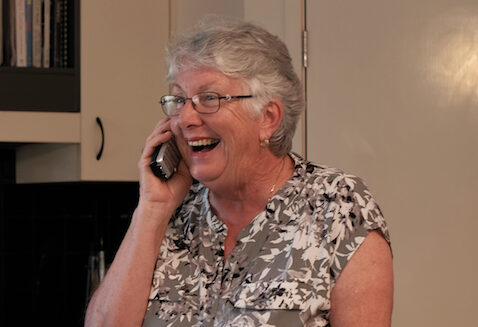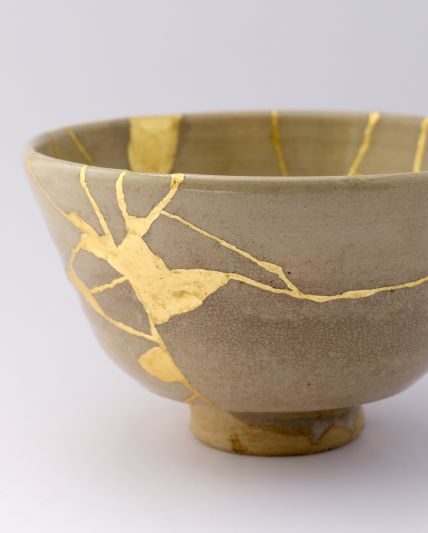It’s natural for your voice to change as you get older, this is described as presbyphonia. As the body and your vocal folds evolve, the sound and strength of your voice will too.
Age related changes aren’t and shouldn’t be seen as a flaw. Instead, you can take inspiration from a traditional Japanese art known as Kintsugi. This artform highlights that imperfection can be beautiful as well. When it comes to your voice, it’s a reminder that you should be working with the changes rather than against them. An experienced voice therapist can help to support your ageing voice by using Phonation Resistance Training Exercises (PhoRTE).

Call Now To Make An Appointment
Jenny is a Certified Practising Speech Pathologist, in Brisbane, with a special interest in voice.
The Art of Imperfection
In modern western culture, items that are broken or faulty are often thrown away as useless. But in Japanese culture, they were once celebrated through Kintsugi.
Kintsugi is known as the art of precious scars. This traditional art called for the repairing of broken or cracked pottery using gold or lacquer. The end result was often a new and extremely beautiful piece of pottery that perfectly reflected the beauty of imperfection.
Your voice is no different. As people age, it isn’t uncommon for your voice to become softer and breathier. This isn’t an imperfection that needs to be ignored or erased. Instead, there are things you can do to work with the changes in your body.
The Ageing Voice

As you age, different parts of your body lose their natural elasticity. This includes your vocal folds. When the vocal folds become floppy or bowed, they don’t close to create a seal. This is why your voice may become softer or breathier as you age.
This is a problem that affects both men and women, and it’s often associated with a decrease in the use of the muscles that support and create your voice.
Muscles have to be used to maintain their mass. Unfortunately, as people age, they may talk less. In fact, it’s estimated that people who spend only 3-5% of their days using their voices can experience disuse atrophy.
This is a problem for many Seniors in our community. A quieter, breathier voice is harder to hear and raises safety concerns. Strengthening your voice will also help you to maintain your social relationships, particularly if you, your friends, or your partner have hearing problems.
As your voice gets quieter, it’s ok to be louder, because you don’t have to save or conserve your voice. However, if you’re forcing or pushing your voice, experiencing pain or coughing when you’re trying to be loud, then you may just be adding strain and a higher pitch on top of the breathiness.
What is PhoRTE?
PhoRTE is a form of vocal therapy that helps to create a strong voice. However, this strength comes from a strong acoustic signal rather than strong muscles and it’s based on the idea of neuroplasticity.
Neuroplasticity is the brain’s ability to grow and change. Your brain can basically rewire itself, forming new synaptic connections when it’s exposed to new knowledge or experiences. According to neuroplasticity, it’s never too late to learn. When it comes to your voice, this means challenging your way of speaking and changing habits to adapt and improve the strength of the signal.
PhoRTE voice therapy consists of five vocal tasks, each of them tailored to optimise the vocal mechanism and increase its power. These exercises involve functional phrases you use all the time to ensure generalisation. The exercises are high intensity and focus on the entire voice mechanism including:
- The rate of speech
- Articulation
- Breathing
- Vocal fold closure
PhoRTE is a highly individual program, so the intensity of the exercises you perform will depend on the condition of your vocal folds. If you have respiratory conditions like asthma or COPD as well as vocal fold ‘bowing, then these conditions require additional consideration. This is why it’s important to see a Speech Pathologist certified in PhoRTE, who can assess your needs in consultation with your medical team.
The Benefits of PhoRTE
PhoRTE is one of a few vocal training strategies that focus on vocal economy. It reduces vocal effort, moving the focus from the larynx (voice box) to the abdominal muscles. This can initially be a little difficult to do if you aren’t used to it, which is why it’s best to work with a speech pathologist.
Increasing the strength and volume of your voice can also assist with swallowing safety. It is one method to build strength and the control to clear your throat and cough so you can clear the airway of mucous. These methods for clearing the throat and airway are known as pulmonary ‘toilet’ exercises.

How to Perform PhoRTE
You can’t expect to do PhoRTE exercises once and solve your voice problems. Like going to the gym, you need to do these exercises regularly to be buff. You will also need to be aware of healthy voice habits such as hydration to support your new routine.
When you start out with PhoRTE, you will probably need 4-5 therapy sessions over a 4–8-week interval. You should also practice the five exercises at home once a day, 6 days a week.
Call Now To Make An Appointment
Jenny is a Certified Practising Speech Pathologist, in Brisbane, with a special interest in voice.
Is PhoRTE Right for me?
You will need to visit a speech pathologist to determine if PhoRTE is right for your voice issues. PhoRTE candidacy is usually determined with:
- A case history
- A laryngeal image that reveals a close gap
- Patient reported questionnaires
- Acoustic measures
- Frailty
- Stimulability to the techniques during assessment sessions
- Respiratory and swallowing symptoms
- Cognitive level
- Depression
- Willing and ableness to complete daily practices
You may also need to work with a team of specialists on this issue at different stages of the vocal training. This can include:
- A respiratory specialist for spirometry testing
- A mental health team to address depression or low motivation to perform the vocal exercises
- Your GP to determine if medications are causing symptoms that are interfering with your engagement
The Takeaway
Seeing a perceived flaw as a source of beauty is what Kintsugi is all about. The pottery that was treated in this way is now seen as great works of art, and your voice is no different.
There’s no point in trying to hide the changes in your voice that occur as you age. Instead, you need to work with them to create something new and beautiful that can be shared with others.
A PhoRTE trained Speech Pathologist can support you to achieve this goal of maintaining your relationships as you age, through the power of your voice.



